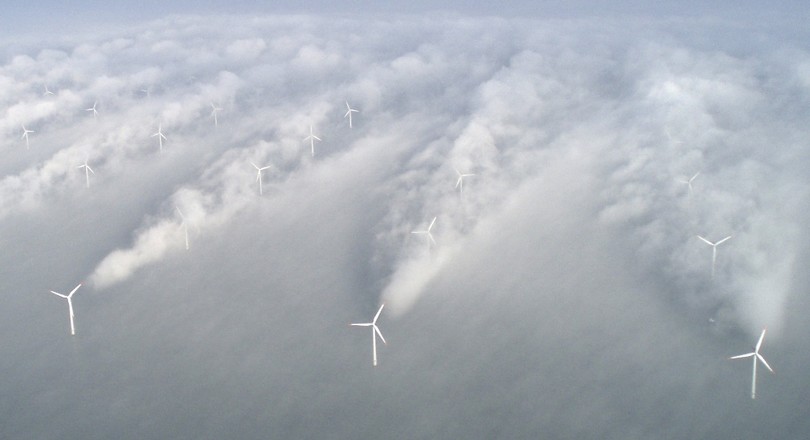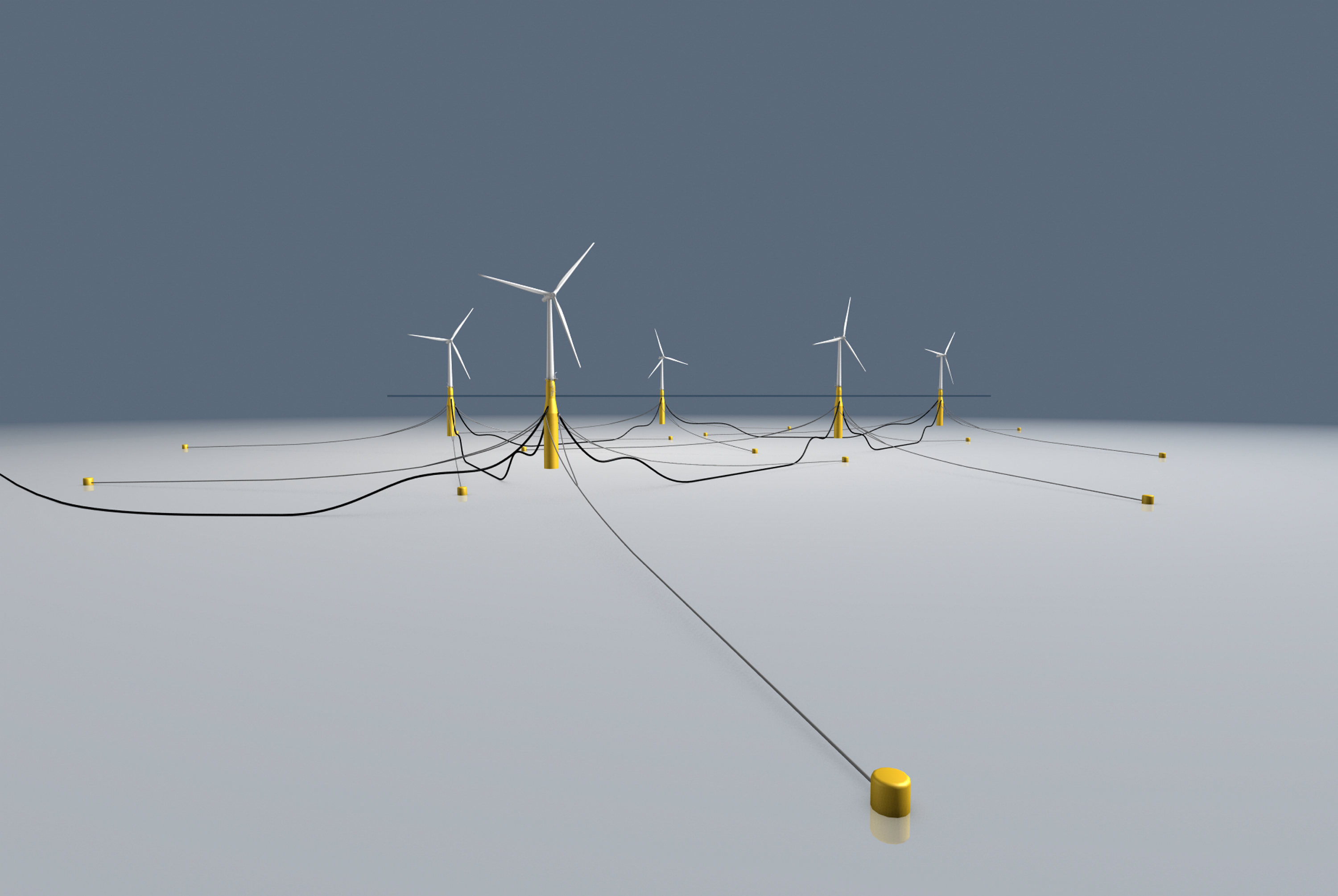
A wind farm sited on the open ocean generates up to three times more power than a land-based wind farm. This has been demonstrated by calculations and simulations carried out by researchers in the US. The large difference in yield is down to the continual supply of air flows from the troposphere.
Of course, it's a well-known fact that the wind blows harder at sea than on land. Which is why many new wind farms in Western Europe are being built at sea, just off-shore. There is even a plan to construct a network of wind farms in the North Sea.
Oceans
But the real potential of wind energy is found on the oceans, according to researchers from the Carnegie Institution for Science in Palo Alto (California), in the journal Proceedings of the National Academy of Sciences. They carried out simulations based on climate models and found a striking result: a wind farm in the middle of the North Atlantic ocean would generate three times more power annually than the same sized wind farm in Kansas, on the continental US.
Vertical supply
The researchers have a good idea of how that's possible. On land, wind turbines placed in groups interfere with each other. The wake of one turbine negatively impacts the efficiency of the turbines immediately downstream. After all, harvesting wind is simply the conversion of kinetic energy into electrical energy, as stated by the authors in their article in PNAS. And a turbine that is rotating, is actually creating drag in the air flow.
And although such wind turbines would also be located relatively close to each other on the open ocean too, they would have less impact on each other. At sea, there is a great deal more vertical supply of air flow from the upper layers of air. As a result, the air flow downstream of an open-ocean wind turbine – where the air suffers drag – recovers its flow rate much faster. And this means that the next wind turbine in the array rotates faster.
Strong 'jet stream'
In the northern hemisphere, this effect is particularly evident in autumn, winter and early spring, when cooling drives a strong ‘jet stream’ in the troposphere. And it's that air flow specifically that supplies the wind farms with fresh (kinetic) energy.
According to the researchers, this effect ensures that a wind farm on the ocean would generate an energy yield over three times higher than the same farm on land: 3 W/m2 ocean vs 1 W/m2 land. And it's this ratio that most interests wind farm planners: how much electrical power does a wind farm generate on average per surface unit? As an aside, this is often lower in practice.
Decades
Though these results are without doubt important, it'll be some time yet before we'll be constructing wind farms on the open ocean. After all, the water there is often several miles deep, so the turbines cannot be mounted on a sea-floor foundation. Instead, they must float, being anchored to the sea floor with nothing more than a cable.
There are various ideas for floating wind turbines. As a matter of fact, in the North Sea, off Scotland, Statoil is actually constructing the first wind farm with floating wind turbines: Hywind (see illustration below). However, the cost of constructing and maintaining this type of farm is high, so some experts think that ocean-based wind farms will not be a reality for decades yet.
But the researchers from the Carnegie Institution for Science on the other hand, see their results as laying down the gauntlet to companies to take on the technical challenges. So no shortage of work in the pipeline for us engineers, then.

Did you like this article? Subscribe to our weekly newsletter.
Opening image: Water vapour condenses in the wake of the 80-turbine wind farm Horns Rev 1 off Denmark. Photo: Vattenfall / Christian Steiness
Nieuwsbrief
Vond je dit een interessant artikel, abonneer je dan gratis op onze wekelijkse nieuwsbrief.

